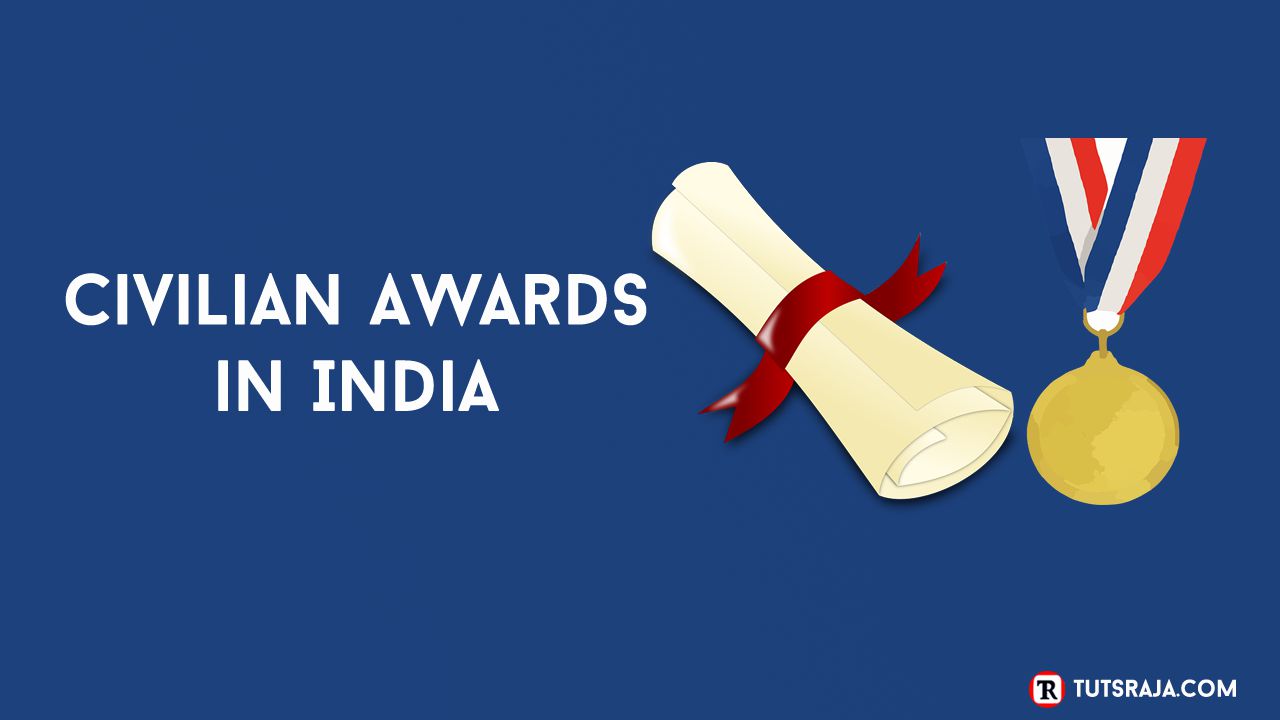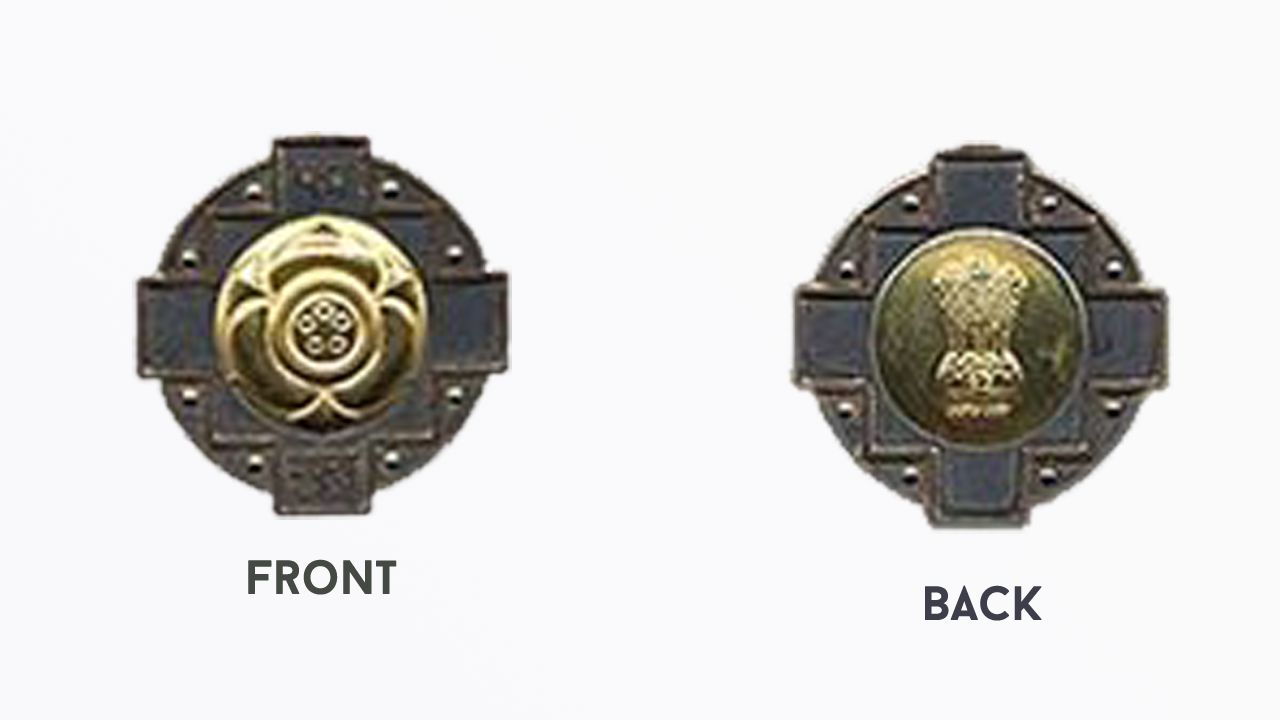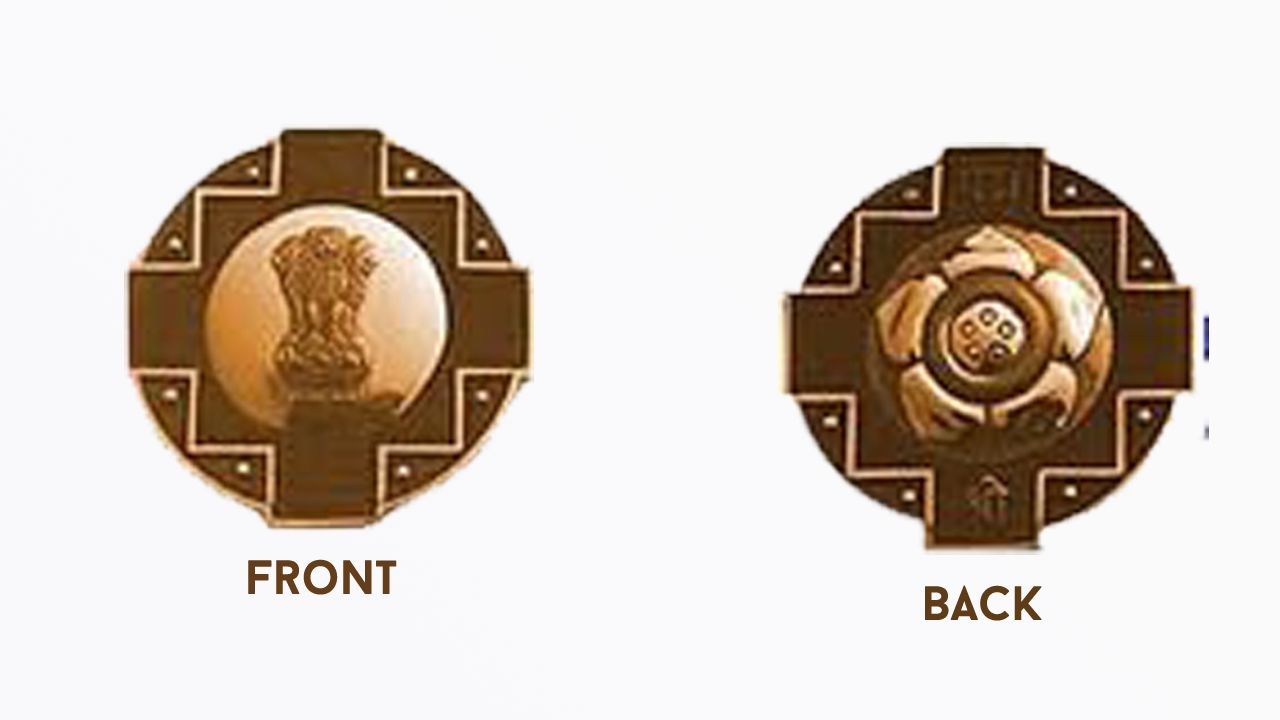
Award
An award is given to an individual, group of individuals, or organization in recognition of their excellence in a particular field.
An award is a form of recognition given as a form of honor to someone who has achieved something in a particular field. A prize or certificate is given for doing something well.
I. Bharat Ratna:

It is the most prestigious and highest civilian award in India. The award is given in recognition of exceptional service/performance at the highest level, regardless of race, profession, position or gender.
The Bharat Ratna award was previously conferred for performance in the fields of arts, science and literature. In December 2011, the Government of India changed the criteria for nomination in any field of human endeavour.
The nomination is recommended by the Prime Minister of India. This recommendation is sent to the President. The President has the final authority to select the winner from a maximum of 3 recommendations/suggestions given by the Prime Minister.
Dhondo Keshav Karve celebrated his 100th birth anniversary in a special ceremony held in April 1958. Dhondo Karve was a renowned social worker and reformer. He is popularly known as Maharshi Karve. Queen's Road in Mumbai was renamed Dhondo Keshav Karve.
Lal Bahadur Shastri was the first person to receive the award posthumously. Jawaharlal Nehru and Indira Gandhi are the only Prime Ministers who have recommended their names for the award.
The Bharat Ratna was awarded to a naturalized citizen, Mother Teresa. Two non-Indian Pakistani nationals, Khan Abdul Ghaffar Khan and former South African President Nelson Mandela, have been awarded the Bharat Ratna.
Key points:
- Front: A picture of the sun with the words Bharat Ratna engraved in Devanagari script on a Peepal (Ficus religiosa) leaf.
- Back: The platinum State Emblem of India placed in the centre with the national motto Satyameva Jayate (Truth alone triumphs) in Devanagari script.
- Established: The award was inaugurated on 2 January 1954 by former President of India Rajendra Prasad.
- Presenter: President of India
- Benefits: There are no cash or monetary benefits.
- First Award: C. Rajagopalachari, Sarvepalli Radhakrishnan, C.V. Raman in 1954
- Total awards: 48 to 2019
II. Padma Awards
Padma Awards are given in three categories.
- 1. Padma Vibhushan
- 2. Padma Bhushan
- 3. Padma Shri
The Padma Awards are one of India's highest civilian awards, announced annually on Republic Day. Recommendations for Padma Awards are received from State Governments/UT Administrations, Central Ministries/Departments, Institutions of Excellence, etc., which are considered by the Awards Committee.
The awards are given on the basis of the recommendations of the Awards Committee and after the approval of the Home Minister, the Prime Minister and the President.
Government employees working in PSUs, except doctors and scientists, are not eligible for these awards. The Padma Awards Committee is constituted by the Prime Minister every year.
The total number of awards to be given in a year (excluding posthumous awards and to foreigners) should not exceed 120.
The awards are announced on 26 January every year and are conferred by the President of India at an awards ceremony held at Rashtrapati Bhavan. The ceremony is usually held in the month of March/April.
The award title shall not be used as a suffix or prefix to the names of the awardees on letterheads, invitation cards, posters, books, etc. In case of any misuse, the awardees shall forfeit the award.
No facility/benefits in terms of any cash allowance or concession in train/air travel shall be attached to these awards. Padma Awards are given for exceptional and distinguished services in any field, including service rendered by government employees. A Presidential notification for the Padma Awards was issued on January 8, 1955.
The words Padma mean lotus in Sanskrit and the words Sri are Sanskrit-derived honorifics equivalent to Mr or Ms. The award seeks to recognise achievements in all activities or disciplines involving an element of service to the Republic.
The award is announced every year on Republic Day except in the years 1977, 1980, 1993 and 1997. The Padma awards do not carry any benefits such as cash allowances and special concessions in train or air travel. It does not include any use of letterheads, invitation cards, posters, books, etc.
1. పద్మవిభూషణ్:

This is the 2nd highest civilian award of the Republic of India. The award is given for exceptional and distinguished services irrespective of race, profession or position or gender.
The award is given to any field including government servants including doctors and scientists, but excluding those working in the public sector awareness.
Key points:
- Previous name(s): Padma Vibhushan "Pahla Varg" (Class I)
- Established: 1954
- Front: A lotus flower in the centre is depicted, with the text "Padma" written in Devanagari script placed above it and the text "Vibhushan" placed below the lotus.
- Back: The national motto of India in Devanagari script "Satyameva Jayate" (Truth alone triumphs) is placed in the centre Platinum symbol
- First awardee: Satyendra Nath Bose, Nandalal Bose, Zakir Hussain
- Total awarded: 307
3. Padma Bhushan:

It is the 3rd highest civilian award in India. The award is given for distinguished services at the highest level, regardless of race, profession, position or gender. As of 2018, the award has been conferred on 1240 individuals, including 10 posthumous and 94 non-citizen recipients.
Key points:
- Previous name(s): Padma Vibhushan "Dusra Varg" (Class II)
- Front: A central lotus flower is depicted, with the text "Padma" written in Devanagari script placed above it, and the text "Bhushan" placed below the lotus.
- Reverse: A platinum India is placed in the centre with the Indian national motto "Satyameva Jayate" (Truth is Victory) in Devanagari script.
- Established: 2 January 1954.
- First Award: Homi Jehangir Bhabha, Shanti Swaroop Bhatnagar, Mahadeva Iyer Ganapathy.
- Total Awards: 94.
4. Padma Shri:

It is the fourth highest civilian award. It recognizes the contribution of Indian citizens in various fields of activity including arts, education, industry, literature, science, sports, social service and public life.
In the 1960s, M. G. Ramachandran refused to accept the award in Hindi.
Key points:
- Obverse: The central lotus is engraved with the text Padma in Devanagari script, placed above it, and the text Sri is placed below the lotus.
- Reverse: The platinum emblem of India is placed in the centre with the national motto of India, Satyameva Jayate (Truth alone triumphs) in Devanagari script.
- Previous name(s): Padma Vibhushan "Tisra Varg"
- Established: 1954
- First Award: Ashadevi Aryanayakam, Bir Bhan Bhatia. Perin Captain
- Total Awarded: 2840
How to Remember:
Trick 1: Counting Characters.
Bharath Ratna - You can remember easily
Padma Vibhushan - 14
Padma Bhushan - 12
Padma Shri - 9
Remember - Decending oder numbers.
Trick 2: Story
Bharath Ratna - Ra
Padma Vibhushan - Vi
Padma Bhushan - bhu
Padma Shri - sh
Remember - Ravi Bhush

 Welcome to Tuts Raja!
Welcome to Tuts Raja!


0 Comments